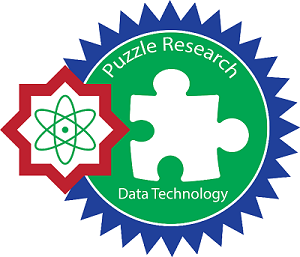ADDITIONAL MENU
Improving K-Means Clustering Accuracy for Academic Success Investigation With Extreme Gradient Boosting Algorithm
Abstract
Human Resources (HR) has a very important role in the development of the nation, so to improve the quality of human resources, education is needed. Education has a role in developing science, disseminating, socializing, and applying it. So that education is one of the important factors in advancing a nation. However, there are still many challenges in achieving quality education, especially in developing countries such as Indonesia, such as parental education level, socioeconomic status, and environmental conditions can also affect the quality of education and students' opportunities for academic success. The research methods used in this research are problem identification, data collection, data analysis, and evaluation. The results in this study are an increase in accuracy of 38.55% from the difference in the K-Means accuracy value of 14% resulting from the David Bounded Index and the use of the extreme gradient adaboost algorithm.
Keywords
Academic; Algorithm; Education; Extreme Gradient Adaboost; K-Means
Full Text:
PDFReferences
J. Hadi, “Meneropong Pendidika Indonesia,” Kompasiana, 2023. [Online]. Available: https://www.kompasiana.com/hadiramadhan3129/63d0791bc3bdbf2fdc174932/meneropong-pendidikan-indonesia.
L. A. Fitriyah, A. W. Wijayadi, and N. Hayati, “Efikasi Diri, Kestabilan Emosi dan Keberhasilan Akademik Mahasiswa Dalam Perkuliahan,” DWIJA CENDEKIA J. Ris. Pedagog., vol. 4, no. 1, p. 44, 2020.
R. D. Aprilia, “Pengaruh Pertumbuhan Ekonomi, Upah Minimum, Pendidikan Dan Tingkat Pengangguran Terhadap Tingkat Kemiskinan,” J. Ilm. Mhs. Fak. Ekon. dan Bisnis, pp. 1–19, 2016.
I. Darmayanti, P. Subarkah, L. R. Anunggilarso, and J. Suhaman, “Prediksi Potensi Siswa Putus Sekolah Akibat Pandemi Covid-19 Menggunakan Algoritme K-Nearest Neighbor,” J. Sains dan Teknol., vol. 10, no. 2, pp. 230–238, 2021.
J. Silva, N. Varela, L. A. B. López, and R. H. R. Millán, “Association rules extraction for customer segmentation in the SMES sector using the apriori algorithm,” Procedia Comput. Sci., vol. 151, no. 2018, pp. 1207–1212, 2019.
G. Gustientiedina, M. H. Adiya, and Y. Desnelita, “Penerapan Algoritma K-Means Untuk Clustering Data Obat-Obatan Pada RSUD Pekanbaru,” J. Nas. Teknol. dan Sist. Inf., vol. 5, no. 1, pp. 17–24, 2019.
M. R. Givari, M. R. Sulaeman, and Y. Umaidah, “Perbandingan Algoritma SVM, Random Forest Dan XGBoost Untuk Penentuan Persetujuan Pengajuan Kredit,” Nuansa Inform., vol. 16, no. 1, pp. 141–149, 2022.
B. A. B. Iii and M. Penelitian, “Yuliansyah Ibrahim, 2022 K-MEANS CLUSTERING DAN EXTREME GRADIENT BOOSTING (XGBOOST) UNTUK PREDIKSI POIN DI GAME FANTASY PREMIER LEAGUE Universitas Pendidikan Indonesia | repository.upi.edu | perpustakaan.upi.edu,” pp. 36–44, 2022.
P. Zeng, F. Sun, Y. Liu, Y. Wang, G. Li, and Y. Che, “Mapping future droughts under global warming across China: A combined multi-timescale meteorological drought index and SOM-Kmeans approach,” Weather Clim. Extrem., vol. 31, p. 100304, 2021.
Y. Chen, F. M. Zahedi, A. Abbasi, and D. Dobolyi, “Trust calibration of automated security IT artifacts: A multi-domain study of phishing-website detection tools,” Inf. Manag., vol. 58, no. 1, p. 103394, 2021.
H. G. Costa, M. H. T. da Silva, G. N. Santos, A. Bonamigo, and R. D. Callado, “Clustering Brazilian Public Emergency Healthcare Units,” IFAC-PapersOnLine, vol. 55, no. 10, pp. 566–571, 2022.
K. Ariasa, I. G. A. Gunadi, and I. M. Candiasa, “Optimasi Algoritma Klaster Dinamis pada K-Means dalam Pengelompokkan Kinerja Akademik Mahasiswa (Studi Kasus: Universitas Pendidikan Ganesha),” J. Nas. Pendidik. Tek. Inform. JANAPATI, vol. 9, no. 2, pp. 181–193, 2020.
H. Asri, “Big Data and IoT for real-time miscarriage prediction A clustering comparative study,” Procedia Comput. Sci., vol. 191, pp. 200–206, 2021.
A. Nowak-Brzezinska and C. Horyn, “Outliers in rules - The comparision of LOF, COF and KMEANS algorithms.,” Procedia Comput. Sci., vol. 176, pp. 1420–1429, 2020.
A. A. Abdulnassar and L. R. Nair, “Performance analysis of Kmeans with modified initial centroid selection algorithms and developed Kmeans9+ model,” Meas. Sensors, vol. 25, no. December 2022, p. 100666, 2023.
J. Li et al., “Hierarchical and partitioned planning strategy for closed-loop devices in low-voltage distribution network based on improved KMeans partition method,” Energy Reports, vol. 9, pp. 477–485, 2023.
J. Dogra, S. Jain, and M. Sood, “Segmentation of MR Images using Hybrid kMean-Graph Cut Technique,” Procedia Comput. Sci., vol. 132, pp. 775–784, 2018.
A. Solichin and K. Khairunnisa, “Klasterisasi Persebaran Virus Corona (Covid-19) Di DKI Jakarta Menggunakan Metode K-Means,” Fountain Informatics J., vol. 5, no. 2, p. 52, 2020.
M. Cui, “Introduction to the K-Means Clustering Algorithm Based on the Elbow Method,” pp. 5–8, 2020.
M. Ahmed, R. Seraj, S. Mohammed, and S. Islam, “The k-means Algorithm : A Comprehensive Survey and Performance Evaluation,” pp. 1–12, 2020.
K. P. Sinaga and M. Yang, “Unsupervised K-Means Clustering Algorithm,” vol. 8, 2020.
A. F. Jahwar, “META-HEURISTIC ALGORITHMS FOR K-MEANS CLUSTERING : A REVIEW,” vol. 17, no. 7, pp. 1–20, 2021.
M. Jahangoshai, M. Eshkevari, M. Saberi, and O. Hussain, “Knowledge-Based Systems GBK-means clustering algorithm : An improvement to the K-means algorithm based on the bargaining game,” Knowledge-Based Syst., vol. 213, p. 106672, 2021.
K. Song, F. Yan, T. Ding, L. Gao, and S. Lu, “A steel property optimization model based on the XGBoost algorithm and improved PSO,” Comput. Mater. Sci., vol. 174, no. December 2019, p. 109472, 2020.
I. Aljarah, “Students’ Academic Performance Dataset,” Kaggle, 2015. [Online]. Available: https://www.kaggle.com/datasets/aljarah/xAPI-Edu-Data/data. [Accessed: 30-Jul-2023].
DOI: http://dx.doi.org/10.24014/ijaidm.v7i1.26657
Refbacks
- There are currently no refbacks.
Office and Secretariat:
Big Data Research Centre
Puzzle Research Data Technology (Predatech)
Laboratory Building 1st Floor of Faculty of Science and Technology
UIN Sultan Syarif Kasim Riau
Jl. HR. Soebrantas KM. 18.5 No. 155 Pekanbaru Riau – 28293
Website: http://predatech.uin-suska.ac.id/ijaidm
Email: ijaidm@uin-suska.ac.id
e-Journal: http://ejournal.uin-suska.ac.id/index.php/ijaidm
Phone: 085275359942
Journal Indexing:
Google Scholar | ROAD | PKP Index | BASE | ESJI | General Impact Factor | Garuda | Moraref | One Search | Cite Factor | Crossref | WorldCat | Neliti | SINTA | Dimensions | ICI Index Copernicus
IJAIDM Stats










